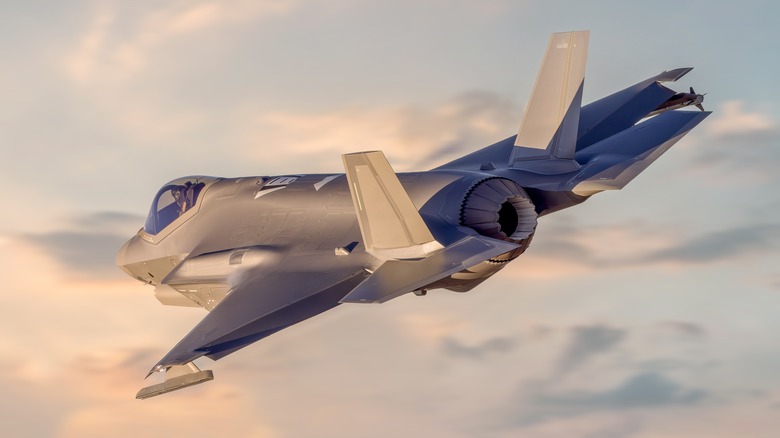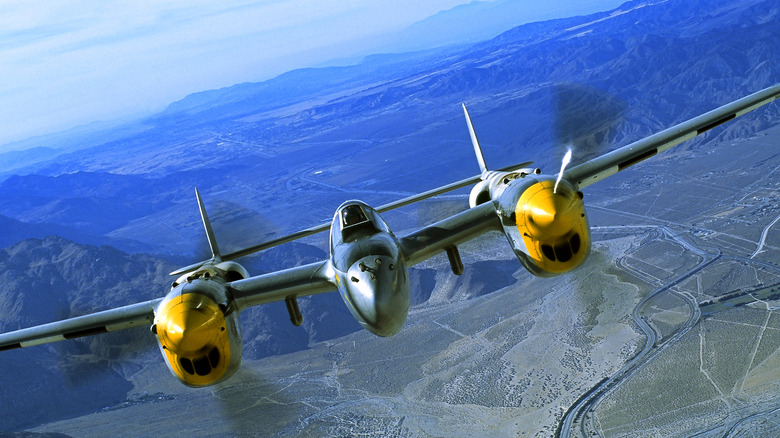Why Is The F-35 Fighter Jet Called The Lightning II?
The controversial F-35 program got its start in 1997 when Lockheed Martin was awarded a $750 million contract to build a next-generation prototype fighter jet that could replace many of the aging aircraft in the U.S. military. When Lockheed eventually beat out Boeing, it spent nearly a decade perfecting what would go on to be known as one of the most advanced jets in the world. Besides being known as the F-35, aerospace and military enthusiasts didn't know what else to call it, and those in charge of naming it didn't hint at what it would be called. That is, not until 2006.
The Air Force called the F-22 the Raptor, so the F-35 could have just as easily received a name after an intimidating dinosaur in the same way the F-15 Eagle and F-16 Falcon were both named after birds. USAF Gen. T. Michael Moseley announced the Joint Strike Fighter's (JSF) moniker in July 2006, saying, "In my travels, Airmen have given me some great suggestions that we'll see on new Air Force weapons systems in the near future. The name for the F-35, Lightning II, was a win for aviation heritage and culture." The Lightning II was considered a force of nature. It would strike with accuracy and be gone before the enemy would hear the thunder from the attack.
The numerals following the name Lightning come from World War II's P-38 already having the Lightning moniker. It's not the first time the U.S. Armed Forces have reused a name for a vehicle. The U.S. Navy has a long history of reusing names for its ships.
The P-38 Lightning was a hero over the Pacific in World War II
The P-38 Lightning was a uniquely designed strike fighter that the Germans came to call Der Gabelschwanz Teufel, or "The Forked-Tail Devil" in English, because it truly lived up to its name as a force of nature. It was the standard plane flown by USAAF pilots in the Pacific and even shot down the orchestrator of the Pearl Harbor raid, Admiral Isoroku Yamamoto. It found its way across the Atlantic first in North Africa and then Europe where it was used to escort bombers to Germany. Seven of the eight top scoring aces in the Pacific theater during World War II, including Major Richard Bong and Major Thomas McGuire, flew the P-38 lightning. Bong and McGuire accumulated 40 and 38 kills, respectively, flying the P-38 Lightning.
It was a twin engine that didn't see its first mass production model until the P-38E and underwent upgrades with each subsequent iteration. The P-38F introduced pylon racks for bombs or exterior fuel tanks while the P-38H swapped out the Allison V-1710 engine for a more powerful version. The J model improved on cockpit heating, engine-cooling, a flat bulletproof windscreen, larger interior fuel tanks, and an improvement on the plane's maneuverability.
The Lightning was armed with four .50-cal. machine guns and a single 20mm cannon. It could get up to 414 mph with the twin Allison V-1710, each producing 1,475 horsepower. Over 10,000 Lightnings were built with the P-38L being the final production model.

